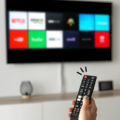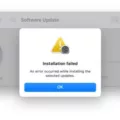Windows 7 is a popular operating system used by many individuals and businesses. However, users may encounter a frustrating issue where their desktop icons keep refreshing. This can be quite annoying as it disrupts the organization of the desktop and can make it difficult to find and access files and programs.
The cause of this issue is often file corruption within the system. Thankfully, there are a few steps you can take to resolve this problem and get your desktop icons back to normal.
One option is to run an SFC (System File Checker) scan. This built-in tool in Windows 7 checks the system for corrupt files and replaces them with a cached copy. To run an SFC scan, follow these steps:
1. Click the Start button and type “cmd” in the search box.
2. Right-click on “cmd.exe” and select “Run as administrator” to open the Command Prompt.
3. In the Command Prompt window, type “sfc /scannow” and press Enter.
4. The scan will now begin and may take some time to complete. Be patient and do not interrupt the process.
5. Once the scan is finished, restart your computer and see if the desktop icons are no longer refreshing.
If the SFC scan did not resolve the issue, you can try running a DISM (Deployment Image Servicing and Management) scan. This scan checks for issues with the system image and repairs them if necessary. Here’s how to run a DISM scan:
1. Open the Command Prompt as an administrator, as mentioned earlier.
2. In the Command Prompt window, type “dism /online /cleanup-image /restorehealth” and press Enter.
3. The scan will begin and may take some time to complete. Again, be patient and let it finish.
4. Once the DISM scan is done, restart your computer and check if the problem with the desktop icons persists.
In some cases, the issue may be caused by a setting related to desktop icon alignment. To fix this, follow these steps:
1. Right-click on an empty space on the desktop.
2. Select “View” from the context menu.
3. Uncheck the “Align icons to grid” option.
4. If the issue persists, go back to the “View” menu and uncheck the “Auto arrange icons” option.
5. Restart your computer and see if the desktop icons stop refreshing.
If none of the above solutions work, you can try restoring the default desktop icons. Here’s how:
1. Right-click on the desktop and select “Personalize”.
2. Click on “Change desktop icons” on the left side of the window.
3. In the Desktop Icon Settings window, click on “Restore Default” and then click “OK”.
4. Log out of your account and log back in, or simply restart your computer.
Another option is to rename the file “IconCache.db” located in the following directory: C:\Documents and Settings\User Name\Local Settings\Application Data. After renaming the file, restart your computer and see if the issue is resolved.
If you are experiencing the frustrating issue of desktop icons refreshing on Windows 7, there are several steps you can take to fix it. Running an SFC or DISM scan, adjusting desktop icon alignment settings, restoring default desktop icons, or renaming the IconCache.db file may help resolve the problem.
How Do I Fix My Taskbar From Refreshing?
To fix the issue of a refreshing taskbar in Windows 10, you can follow these steps:
1. Run an SFC scan:
– Press the Windows key + X and select “Command Prompt (Admin)” or “Windows PowerShell (Admin)” from the menu.
– In the command prompt window, type “sfc /scannow” and press Enter.
– This will initiate the System File Checker scan, which will check for any corrupt system files and attempt to repair them.
– Wait for the scan to complete. It may take some time.
– Once the scan is finished, restart your computer and check if the taskbar still refreshes.
2. Run a DISM scan:
– Open the command prompt with administrative privileges as mentioned in the previous step.
– Type “DISM /Online /Cleanup-Image /RestoreHealth” and press Enter.
– DISM (Deployment Image Servicing and Management) will scan your system and repair any issues found with the Windows image.
– Be patient as the scan may take a while to complete.
– After the scan finishes, restart your computer and check if the taskbar refreshing problem is resolved.
If the above steps do not resolve the issue, you can try the following additional solutions:
3. Update your graphics card driver:
– Outdated or incompatible graphics card drivers can sometimes cause taskbar refreshing issues.
– Visit the manufacturer’s website of your graphics card and download the latest driver compatible with your system.
– Install the driver and restart your computer.
4. Disable unnecessary startup programs:
– Some third-party programs that start with Windows can conflict with the taskbar and cause refreshing.
– Press Ctrl + Shift + Esc to open the Task Manager.
– Go to the “Startup” tab and disable any unnecessary programs that are set to start with Windows.
– Restart your computer and check if the problem persists.
5. Perform a clean boot:
– A clean boot starts Windows with minimal drivers and startup programs, helping to identify if a third-party application is causing the issue.
– Press the Windows key + R, type “msconfig” and press Enter.
– In the System Configuration window, go to the “Services” tab and check the “Hide all Microsoft services” box.
– Click on “Disable all” to disable all third-party services.
– Go to the “Startup” tab and click on “Open Task Manager.”
– Disable all startup programs in the Task Manager.
– Close the Task Manager and click “OK” in the System Configuration window.
– Restart your computer and check if the taskbar continues to refresh.
By following these steps, you should be able to resolve the issue of a refreshing taskbar in Windows 10.
![]()
Why Do My Desktop Icons Move When I Restart?
There are a few possible reasons why your desktop icons may move when you restart your computer. Here are some explanations:
1. Auto-arrange feature: Windows has a built-in auto-arrange feature that automatically organizes your desktop icons in a grid layout. If this feature is enabled, your icons will be rearranged to fit the grid every time you restart your computer.
2. Screen resolution changes: Sometimes, when you restart your computer, the screen resolution may change. This can happen if you connect your computer to a different monitor or if you update your graphics drivers. When the screen resolution changes, it can affect the position of your desktop icons, causing them to move.
3. Third-party software conflicts: Certain third-party software or programs installed on your computer may interfere with the desktop icon positions. These programs may have their own settings or preferences that override the default desktop icon arrangement, causing them to move when you restart.
4. Corrupted icon cache: The icon cache is a file that Windows uses to store and display icons on your desktop. If this cache becomes corrupted or damaged, it can lead to issues with the desktop icons, including moving or disappearing after a restart.
5. Multiple monitor setup: If you have multiple monitors connected to your computer, the desktop icons may be affected when you restart if the monitors are not properly configured or if the display settings change.
To fix the issue of desktop icons moving when you restart your computer, you can try the following solutions:
– Disable the auto-arrange feature: Right-click on the desktop, go to View, and uncheck the “Align icons to grid” option. This will allow you to manually arrange your icons without them being rearranged after a restart.
– Turn off auto-arrange in the view options: Right-click on the desktop, go to View, and uncheck the “Auto arrange icons” option. This will prevent the icons from automatically rearranging when you restart your computer.
– Update your graphics drivers: Outdated or incompatible graphics drivers can cause issues with your desktop icons. Updating your drivers to the latest version may resolve the problem.
– Reset the icon cache: You can reset the icon cache by following these steps:
1. Open File Explorer and navigate to the following location: %userprofile%\AppData\Local
2. Locate the file named “IconCache.db” and delete it.
3. Restart your computer.
– Check for conflicting software: If you suspect that a specific program is causing the icons to move, try uninstalling or disabling it to see if the issue is resolved.
– Adjust display settings: If you have multiple monitors, make sure they are properly configured and that the display settings are set correctly.
By trying these solutions, you should be able to fix the issue of desktop icons moving when you restart your computer.
How Do I Stop Icons From Moving On My Desktop Windows 10?
To prevent icons from moving on your Windows 10 desktop, follow these steps:
1. Press the Win + D keys simultaneously on your keyboard to access the Windows desktop.
2. Right-click on any blank space on the desktop.
3. A context menu will appear. Select “View” from the menu.
4. In the View submenu, uncheck the “Auto arrange icons” option.
Alternatively, you can follow these steps:
1. Press the Win + D keys to go to the desktop.
2. Right-click on a blank area of the desktop and choose “Personalize” from the context menu.
3. In the Personalization settings, select “Themes” from the left-hand side menu.
4. Scroll down and click on “Desktop icon settings” under the “Related Settings” section.
5. In the Desktop Icon Settings window, uncheck the “Allow themes to change desktop icons” option.
6. Click “OK” to save the changes.
If the issue persists, you can try restarting your device to see if that resolves the problem.
How Do I Fix Corrupted Desktop Icons In Windows 7?
To fix corrupted desktop icons in Windows 7, follow these steps:
1. Right-click on your desktop and select “Personalize.”
2. In the Personalization window, click on “Change desktop icons” located on the left side.
3. A new window will open titled “Desktop Icon Settings.” Click on the “Restore Default” button.
4. This will reset all your desktop icons to the default settings. Logout and then log back in, or simply reboot your computer to see if the issue is resolved.
If the problem persists, you can try the following additional step:
1. Navigate to the following location on your computer: C:\Users\YourUserName\AppData\Local.
(Note: Replace “YourUserName” with your actual username.)
2. Find a file named “IconCache.db” and rename it to something like “IconCache_old.db.”
3. After renaming the file, restart your computer.
4. Windows will automatically recreate the IconCache.db file, which may help fix the corrupted desktop icons.
If these steps do not resolve the issue, there may be a more complex problem with your system. In such cases, it is recommended to consult with a computer technician or seek further assistance from the Windows support team.
Conclusion
If you are experiencing issues with your Windows 10 desktop or taskbar constantly refreshing, it is likely due to file corruption. To fix this issue, you can try running an SFC scan or DISM scan. The SFC scan is a built-in tool in Windows that checks for corrupt system files, while the DISM scan can repair the Windows image if it is corrupted.
Additionally, you can try adjusting the desktop icon settings to see if that resolves the issue. Right-click on the empty space on your desktop and select View. From there, you can uncheck the options for aligning icons to the grid or auto-arranging icons. Reboot your PC and see if the issue is resolved.
If the problem persists, you can try resetting the desktop icon settings to their default values. Right-click on the desktop, choose Personalize, then Change desktop icons. From there, click on the Restore Default button and then log out and log back in or reboot your device.
Another potential solution is to rename the file IconCache.db located in the C:\Documents and Settings\User Name\Local Settings\Application Data directory. After renaming the file, reboot your device and check if the issue is resolved.
By following these troubleshooting steps, you should be able to fix the issue of desktop icons rearranging after rebooting in Windows 10.







